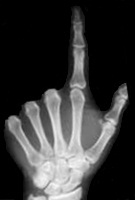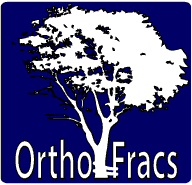Journal Club
July 2010
Open reduction and endobutton fixation of displaced fractures of the lateral end of the clavicle in younger patients.
- Authors: Robinson CM, Akhtar MA, Jenkins PJ, Sharpe T, Ray A, Olabi B.
- Institution: The Shoulder Injury Clinic New Royal Infirmary of Edinburgh, Edinburgh
- Journal: J Bone Joint Surg Br. 2010 Jun;92(6):811-6.
Reviewed by
Dr Emily Kong
MBBS | Accredited Orthopaedic Registrar
Introduction
- Displaced fractures of lateral 1/3 clavicle associated with high risk of non-union
- Failure to heal can lead to:
- Persistent pain
- Restricted ROM
- Loss of strength
- Persistent pain
- Operation often indicated at 1° treatment for displaced fractures
- Operative options:
- Coracoclavicular screws
- Hook plates
- Lateral clavicle plates
- Coracoclavicular screws
- Cx associated with implants:
- Failure of metalware
- Infection
- Restriction of AC joint movement
- Failure of metalware
- Aim
- To assess in patients <60yrs undergoing operative intervention of lateral 1/3 clavicle fractures :
- Functional outcome
- Radiological outcome
- Prevalence of complications
- To assess in patients <60yrs undergoing operative intervention of lateral 1/3 clavicle fractures :
Methodology
- Inclusion criteria:
- Medically fit patients <60yrs
- <3wks from injury
- Completely displaced fractures with no residual cortical contact
- Located in portion of clavicle lateral to vertical line drawn up from base of coracoid
- Medically fit patients <60yrs
- Patients
- 16pts with displaced fractures of lateral 1/3 clavicle
- Mean age 38.3 (range 15 to 56)
- All male
- No open fractures
- No pre-op neurovasc compromise
- No associated fractures of scapula or proximal humerus
- 2pts minor head injuries
- 5pts ipsilateral rib fractures
- Pre op XRs:
- AP
- Axillary lateral
- AP
- Classification systems:
- Neer, Edinburgh
- Neer, Edinburgh
- Operative Technique
- Beach chair
- Mean 6 days post injury (2 to 15)
- Mean duration of surgery 40mins (30 to 75)
- 6cm vertical incision with base centred on coracoid process
- Deltotrapezius fascia incised perpendicular to incision and released from coracoid
- Bone tunnels drilled in clavicle with 4.5mm cannulated drill:
- Clavicle
- 15mm medial to fractures site
- 15mm medial to fractures site
- Coracoid
- Centred in coracoid, 20mm from tip
- created under direct vision by splitting deltoid to reduce risk of eccentric tunnel placement:
- Drilled perpendicular to superomedial surface of coracoid between 30° to 45° to coronal plane
- Centred in coracoid, 20mm from tip
- Clavicle
- Endobutton construct: 2 Endobuttons with #2 Orthocord
- Core suture looped twice through the buttons:
- Creates 6-ply sliding pulley effect
- Creates 6-ply sliding pulley effect
- Lower button is passed through clavicle and coracoid:
- Toggled on undersurface of coracoid
- Reduced under direct vision and suture tensioned
- Accurate reduction and toggling of lower endobutton confirmed with II
- Suture ends tied over proximal endobutton
- Beach chair
- Postop
- Sling 4/52 post op
- Physio commenced 4/52 post op:
- Continued until full ROM achieved
Results
- Complications:
- No early post op complications
- No pt required further surgery
- 1pt developed fibrous non-union:
- No XR evidence of loss of reduction or displacement of endobutton
- No pain or functional deficit
- Not willing for further surgery
- Remains asymptomatic 2yrs post op
- No XR evidence of loss of reduction or displacement of endobutton
- 1pt shoulder stiffness 3/52 after R/O sling
- Loss of ER 20° and Abd 20°
- Regained full ROM 3/12 post op with physio
- Loss of ER 20° and Abd 20°
- Functional Outcome:
- DASH and Constant score signif improved after 6 months
- No statistically signif difference at 6 to 12 months
- At 1yr: 15pts no pain,1pt mild pain
- DASH and Constant score signif improved after 6 months
- Functional Outcome:
- No RC weakness or impingement
- No signs GH joint instability
- No AC joint symptoms
- 13pts sedentary jobs returned by 3 months
- 3pts manual workers returned by 6 months
- No RC weakness or impingement
- Radiological Outcome:
- Mean initial displacement 20mm (18-25mm)
- Mean residual post op displacement 1mm
- No failures of fixation
- No loss of reduction in 1st yr post op
- 15 patients radiological union
- 1 pt fibrous non-union
- Mean initial displacement 20mm (18-25mm)
Discussion
- Advantages:
- One operation
- No prominent metalware
- Minimally invasive option
- One operation
- Disadvantages:
- Technically difficult to place bone tunnels centrally
- Eccentric tunnel placement can cause implant cut-out and failure
- Technically difficult to place bone tunnels centrally
Pros of Study
- Multiple modes of outcome assessment
- Trialled different variations of their own technique
Cons of Study
- Small series
- No direct comparison to other forms of treatment
Take home message
Promising management option for lateral end of clavicle fractures
Webpage Last Modified:
14 August, 2010



